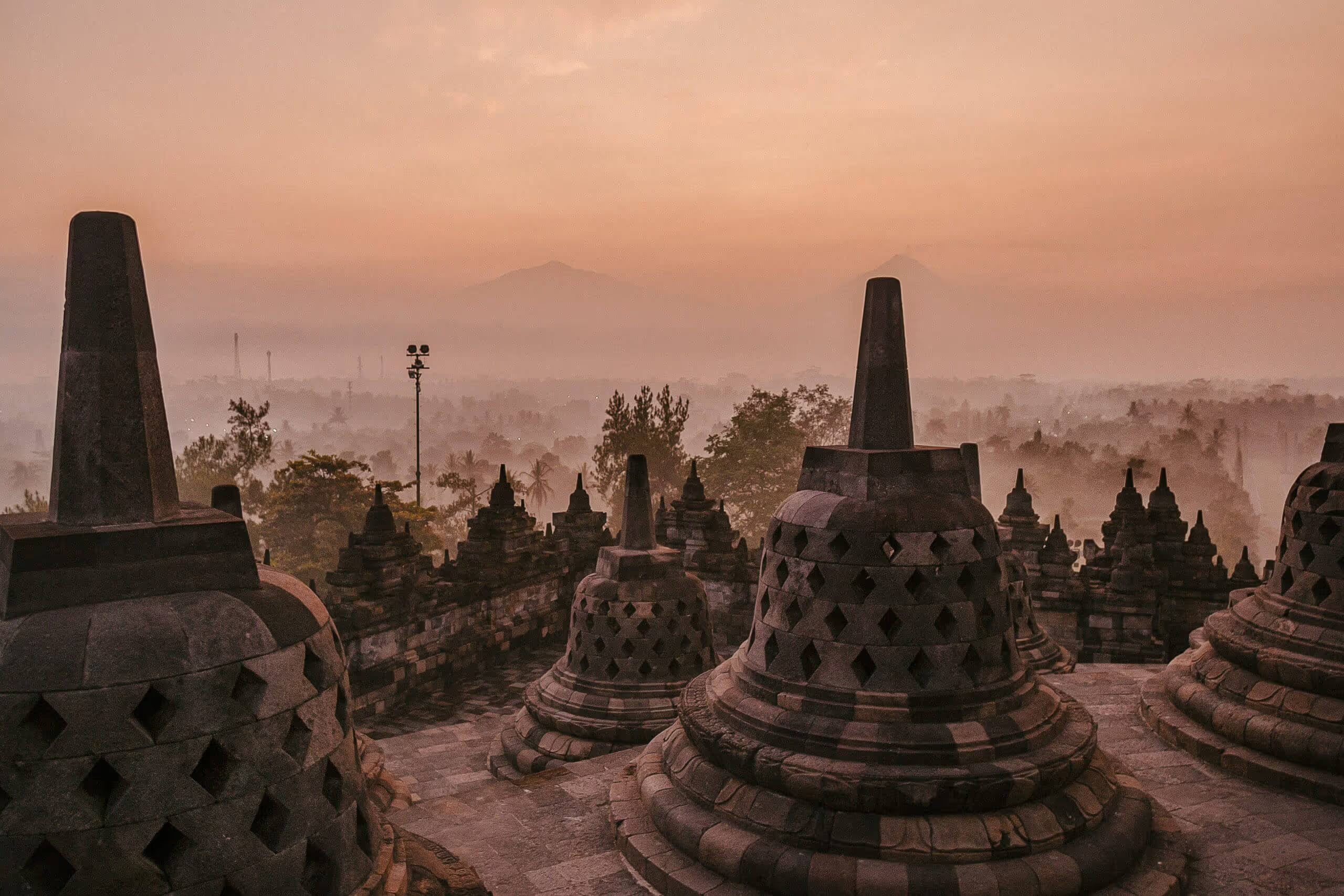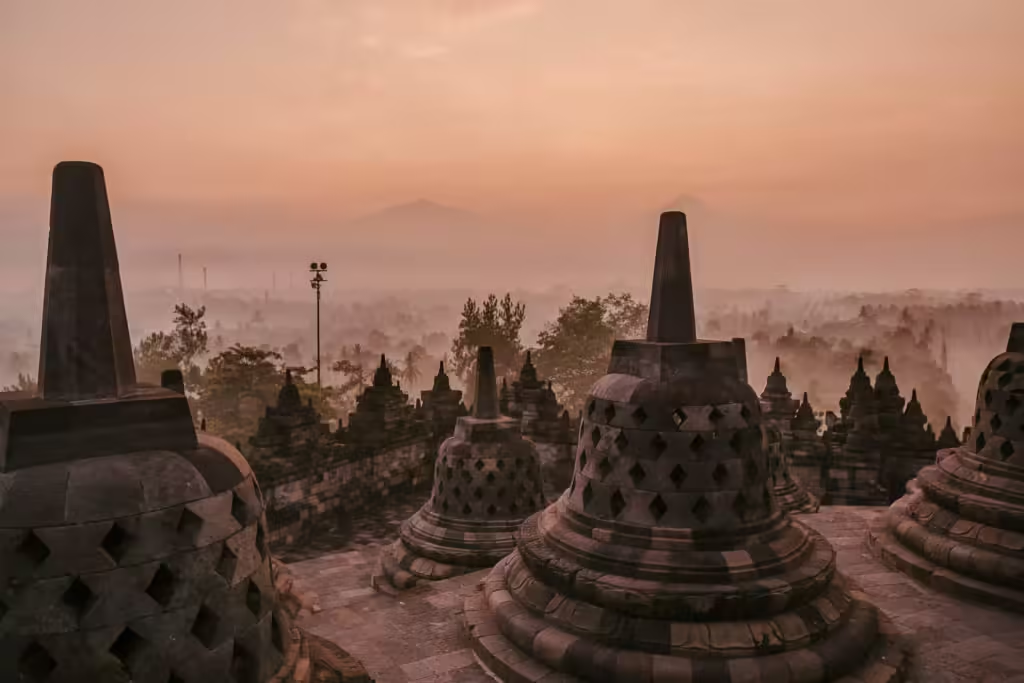
Nestled in the lush landscapes of Central Java, Indonesia, Borobudur is not just a monument but a testament to human ingenuity and spiritual devotion. Constructed in the 9th century during the reign of the Sailendra Dynasty, Borobudur stands as the world’s largest Buddhist temple, an architectural marvel comprising nine stacked platforms adorned with 2,672 relief panels and 504 Buddha statues. This UNESCO World Heritage Site is not only a magnet for tourists but also a sacred pilgrimage destination for Buddhists worldwide. The grandeur of Borobudur, with its intricate carvings and towering stupas, reflects the deep historical and cultural significance it holds for the Indonesian people.
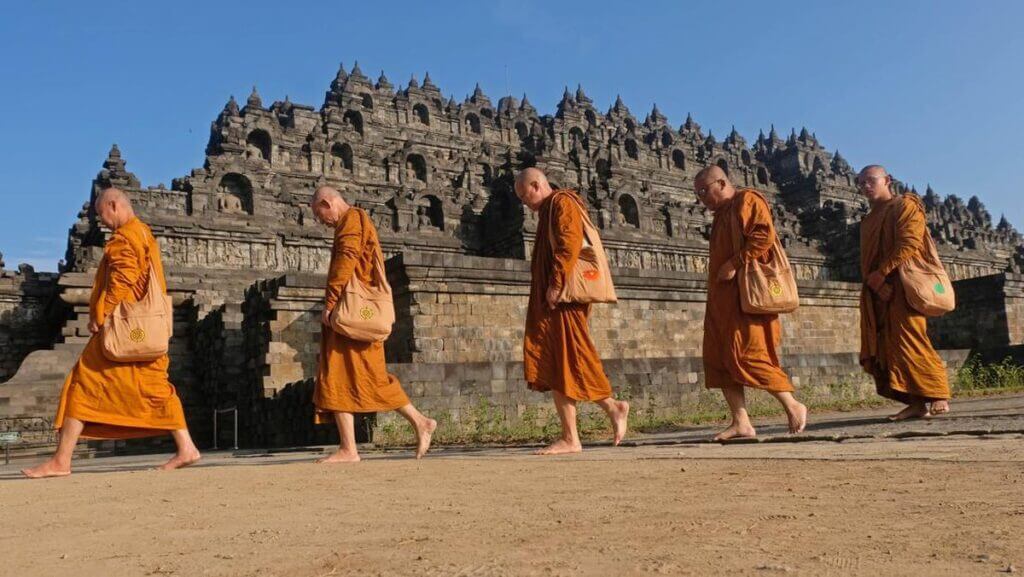
Borobudur’s majestic presence is amplified each year during Vesak Day, a significant Buddhist festival commemorating the birth, enlightenment, and death of Gautama Buddha. Celebrated during the full moon in May, Vesak Day sees thousands of devotees and tourists flock to Borobudur, transforming the temple grounds into a vibrant sea of lights and prayers. For the local community and Buddhists around the globe, this day is not only a religious observance but also a time for reflection, meditation, and celebration of the Buddha’s teachings.
This year’s celebration attracted thousands of pilgrims and tourists from around the world who gathered to participate in the various ceremonies and rituals. The event began with a series of prayers and meditation sessions, fostering a sense of peace and reflection among the attendees. Monks in saffron robes led processions, chanting sutras and carrying candles, flowers, and incense.
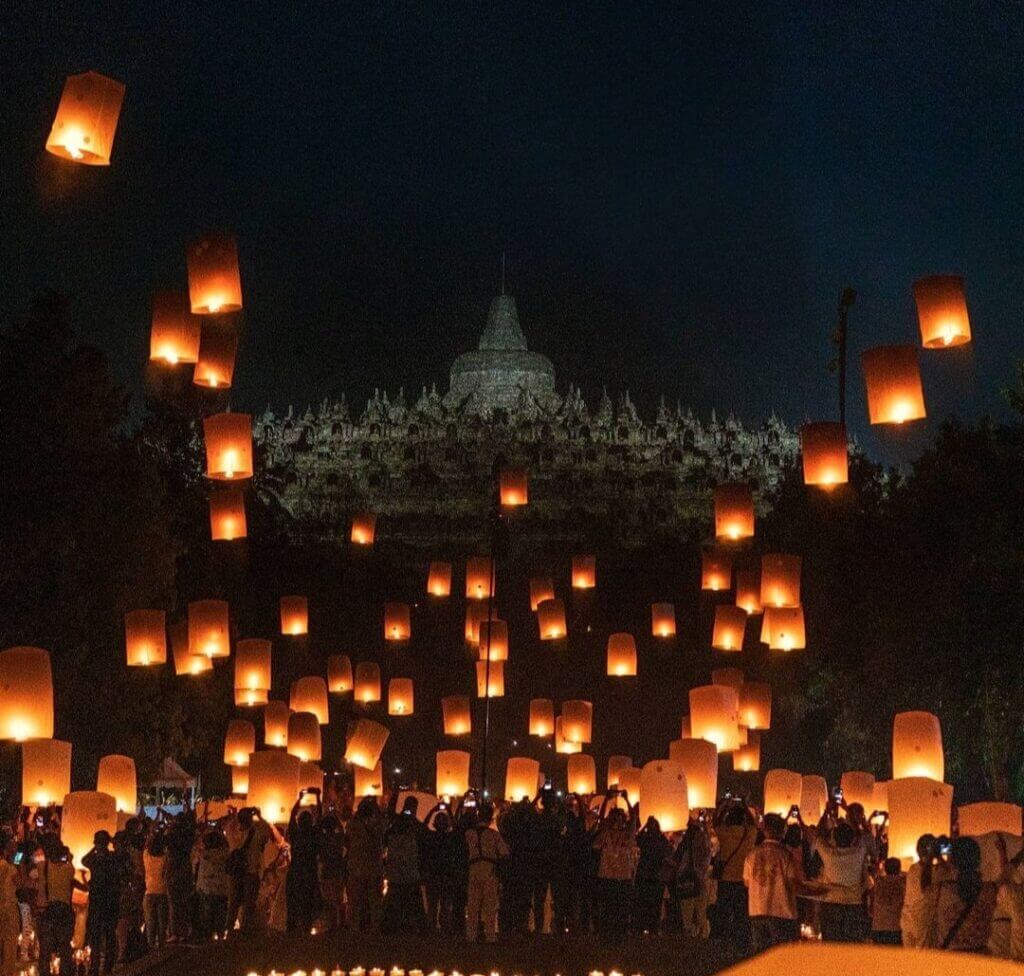
One of the highlights was the procession from Mendut Temple to Borobudur Temple, which symbolizes the journey towards enlightenment. Participants carried lit candles and walked in a solemn, respectful manner. The atmosphere was filled with the scent of incense and the sound of traditional gamelan music, enhancing the spiritual ambiance.
In the evening, the temple complex was illuminated beautifully with thousands of lanterns, creating a breathtaking visual spectacle. The release of lanterns into the night sky symbolized the release of bad luck and the ushering in of good fortune and blessings.
Cultural performances, including traditional dances and music, were also part of the celebration, showcasing the rich heritage of Indonesian culture. The event concluded with a sense of unity and reverence, leaving a lasting impression on all who attended.
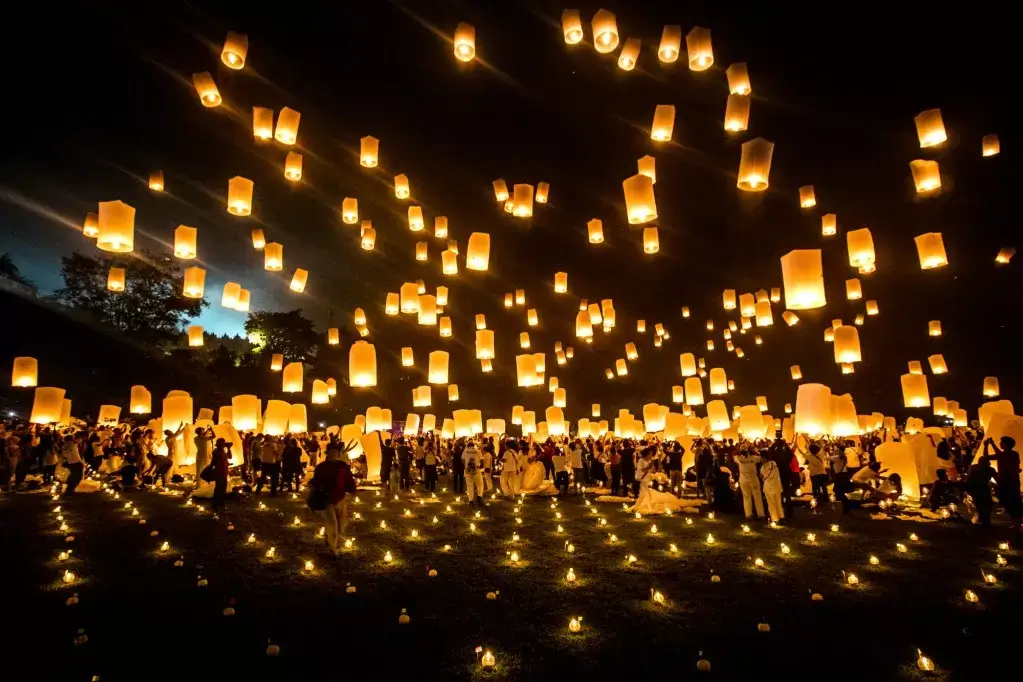
Visiting Borobudur on Vesak Day is more than just a sightseeing experience; it is a journey into the heart of Indonesian culture and Buddhist spirituality. The temple, with its awe-inspiring architecture and sacred ambiance, provides a perfect backdrop for the rituals and festivities. As the sun sets and the lanterns begin to ascend, the sight of thousands of glowing orbs lighting up the night sky against the silhouette of Borobudur is nothing short of magical, leaving a lasting impression on all who witness it.

